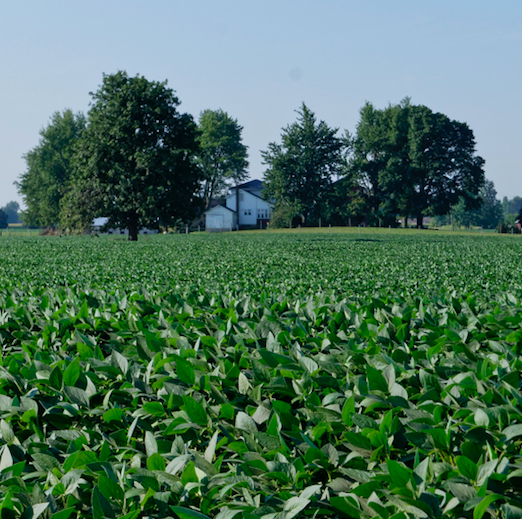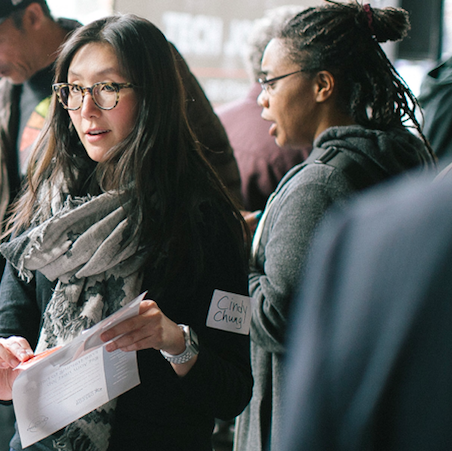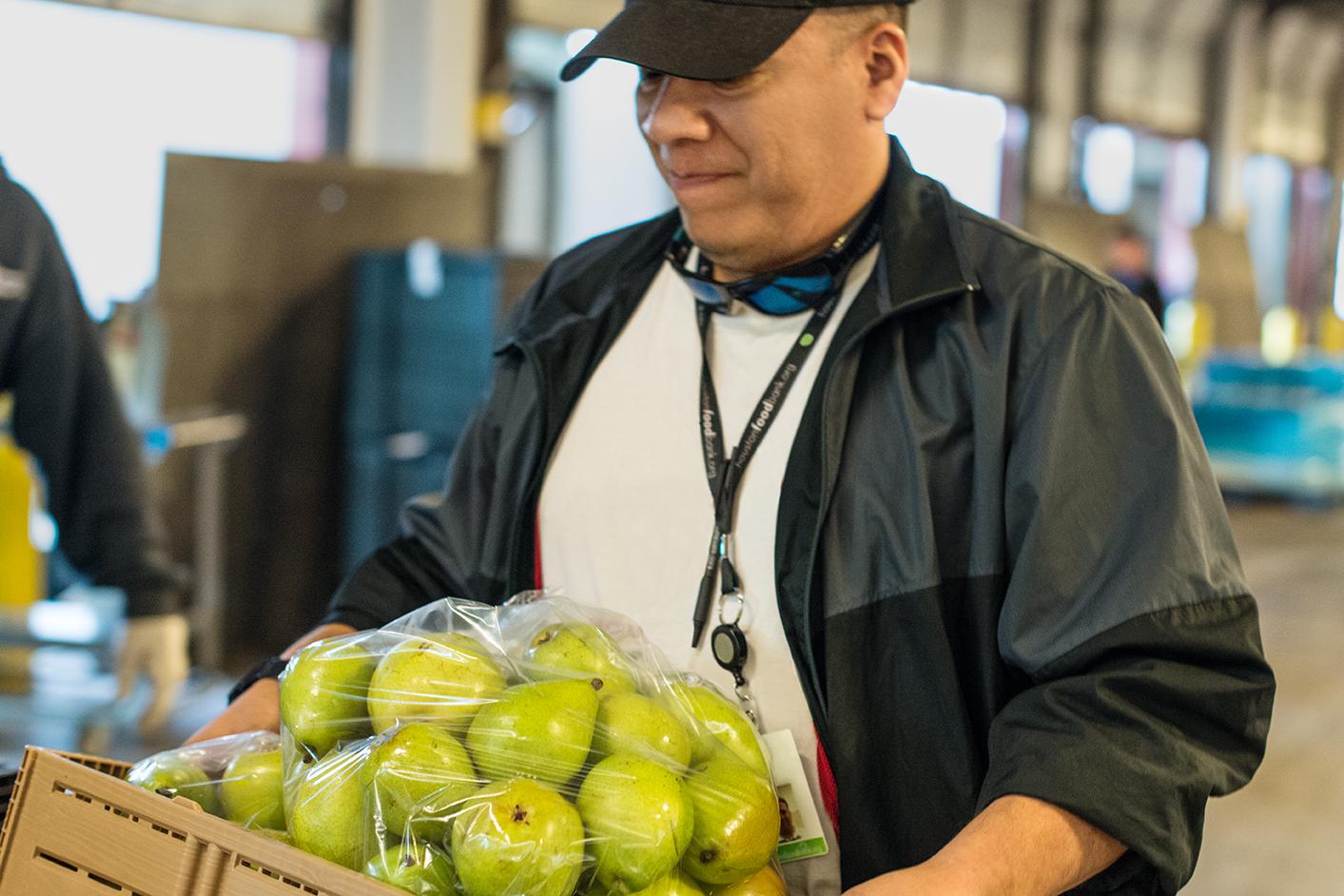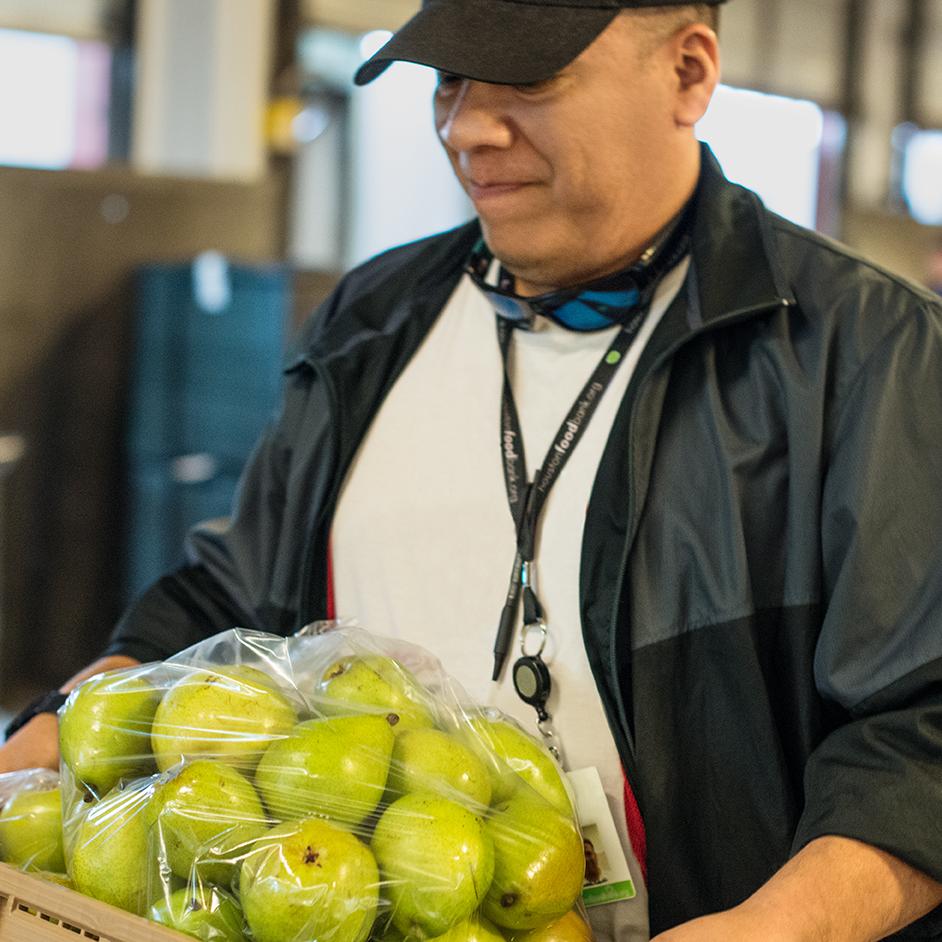Conservatives Embrace Renewables, But It’s Complicated


A new organization in Wisconsin demonstrates why the “right” end of the political spectrum is hopping on board the renewables train and driving it, too.
As the bipartisan movement in favor of renewable energy grows, self-identified conservatives are beginning to find their voice. A new organization in Wisconsin demonstrates why the “right” end of the political spectrum is hopping on board the renewable energy train and driving it, too.
The conservative case for renewable energy
To a large degree, the conservative case for renewable energy boils down to simple economics. Now that renewables are competitive on cost, it doesn’t make political sense for conservatives to support more expensive alternatives.
Though conservative thinking is closely identified with the Republican party, the new Wisconsin group aims for a party-neutral and economically sound appeal. Calling itself the Wisconsin Conservative Energy Forum, the organization stakes its claim as “Wisconsin’s Conservative Voice for Energy Solutions,” or WCEF.
WCEF notes that from “Presidents Ronald Reagan and George W. Bush to our own Governor Tommy Thompson, conservatives have long demonstrated a commitment to enacting responsible and cost-effective energy policy.”
From that platform, WCEF can make the case for renewable energy without compromising its conservative identity:
“In recent years energy markets have begun a cost-driven transition to renewable energy technologies, and conservatives are needed to lead an effort to secure affordable, reliable, clean, and efficient energy for Wisconsin ratepayers.”
Grassroots conservatives like renewable energy, too
WCEF is on safe ground politically when it makes the case for renewable energy.
Voters are already crossing party lines to support solar, wind and other forms of renewable energy, and politicians are taking note.
For WCEF, this amounts to an opportunity to attract more voters to the conservative side of the political fence. The organization states up front that “we believe conservatives can champion clean energy policy and grow support for the conservative clean energy movement.”
WCEF cites a November 2016 poll by its umbrella organization, the Conservative Energy Network, which found that “an overwhelming majority of voters support the development of clean energy sources like solar, wind, hydro, and bioenergy.”
That support is especially strong in the Great Lakes region, where Wisconsin is situated. In that region, the poll found that 86 percent of the state’s voters support action on renewable energy.
The Conservative Energy Network is itself a new organization. Launched in 2016, it serves as a clearinghouse for state-based conservative organizations like WCEF.
Like WCEF, its focus is on growing the conservative movement as well as advocating for clean power.
That could end up with some unintended political consequences – and a warning for businesses in this age of “brands taking stands,” especially as more companies are searching for ways to bolster their sustainability chops. For example, among the Conservative Energy Network’s member organizations is the Christian Coalition of Florida, which has the aim of “standing in the gap to protect our traditional family values from a culture in freefall.”
But this embrace of renewables is complicated
Be that as it may, the proof will be in the pudding as far as WCEF’s activism on behalf of renewable energy goes. Not all independently organized groups that purport to advocate for renewable energy have the public’s best interest in mind. Some are affiliated with utility companies and other stakeholders, where the focus is on self-interest and control of the energy marketplace.
In addition, conservative organizations that straightforwardly favor renewables may be in for some rough-and-tumble play, as different parts of the renewable energy sector compete with each other.
A recent article in the Wisconsin State Journal teased out the marketplace for renewables as it relates to Wisconsin:
“One of the casualties of the falling cost of wind and solar has been biomass digesters, which convert cow manure -- one of the dairy state’s largest resources and liabilities -- into energy.”
As reported by the State Journal, utilities in Wisconsin had been providing higher rates for digesters. Now that other renewables are more competitive, the premium rates are melting away and the digesters may not be as profitable — or not profitable at all.
The conservative case for the New Green Deal
Although WCEF makes its main case on a strictly bottom-line basis, the organization does leave itself some wiggle room to support the state’s dairy industry through price supports or other incentives that keep less-than-competitive forms of renewable energy in the mix.
The group emphasizes that energy diversity as an important aim, and that each state should promote energy diversity based on regional considerations.
WCEF also takes environmental activism into account, stating that “ratepayers should have an active role in determining energy policy that is affordable, reliable and adaptable, and that protects our environment and public health.”
If this is beginning to sound a little Green New Deal-ish, that’s no accident.
Though the language in the proposed Green New Deal is rather strong, in essence the proposal simply fleshes out the basic tenets of the corporate social responsibility movement, especially as it relates to renewable energy.
Taking climate change as a jumping-off point, the Green New Deal calls for stimulating renewable energy development both as a means of addressing an over-arching global issue while also creating new opportunities and a healthier environment locally.
The WCEF version leaves out the part about climate change while neatly (though perhaps unintentionally) applying the Green New Deal to Wisconsin:
“Leveraging Wisconsin’s transition to clean and renewable energy will stimulate our economy, lower electricity costs, protect our national and grid security, reduce pollution, and improve the public health for all Wisconsinites.”
Well said!
Image credit of Wisconsin State Capitol: J. Pellgen/Flickr
Kaepernick’s Settlement with the NFL: A Winner or Loser?


The NFL’s recent settlement with Colin Kaepernick offers a lesson to business in how to manage, or actually not manage, employee activism.
Colin Kaepernick, the former starting quarterback for the San Francisco 49ers, recently settled his collusion lawsuit with the NFL. The settlement, as speculated from a number of reports, is in the $60 to $80 million range. Kaepernick filed a collusion grievance in October 2017, alleging that the NFL and its owners were blackballing the former Super Bowl runner-up because of his controversial kneeling protest spotlighting racial injustice in America.
The protest instantly drew national attention and instigated strong political opinions. Conservatives denounced the kneeling as anti-American (and somehow anti-military). Liberals, meanwhile, generally supported Kaepernick’s protest - if not supporting his cause – by reiterating his right to protest as guaranteed in the Constitution. The publicity surrounding the protest reached its peak when President Donald Trump further politicized the issue, calling on NFL owners to tell their insubordinate kneeling players to “get that [S.O.B.] off the field right now!”
Trump’s influence in Kaepernick’s demise extended beyond what he said publicly. Private conversations with influential owners like the Dallas Cowboys’ Jerry Jones and New England Patriots’ Robert Kraft reveal that he requested the owners support him on the stance because “this is a very winning, strong issue for me . . . this one lifts me.”
The lawsuit against the NFL promised to be a long, tired battle as Kaepernick and his former teammate and kneeling partner Eric Reid built their case against NFL owners. Instead, Kaepernick, Reid and the NFL came to a settlement as described in a three sentence, matter-of-fact statement posted on Twitter by their attorney, Mark Geragos.
Already, there are vast numbers of supporters and detractors on each side of the “should Kaepernick have settled?” debate. And it’s easy to see why. Many Americans felt deeply involved and emotional about this lawsuit. Representing the nexus of race, politics and sports, followers expected finality, not a settlement with non-disclosure agreements. But as is the case within any industry, the answers are never simple, especially in this current “brands taking stands” era.
Let’s assess both sides of the debate.
Of course Kaepernick won - he just defeated the well-oiled NFL machine
It’s noteworthy to mention that this isn’t the first time the NFL has coughed up a large amount of money, but the NFL is notoriously tough to tackle in the court of law. Even Tom Brady, one of the most respected and acclaimed players in NFL history, succumbed to the league when a federal court upheld the NFL’s four game suspension of Brady for his involvement in “Deflategate.”
If what has been speculated is even close to accurate, the $60 to $80 million would easily make Kaepernick the highest paid player in the NFL over the two-year span of his absence. He is also immediately available to be resigned with a team, and Geragos has surmised that teams will start knocking soon.
Jemele Hill, a staff writer for The Atlantic and former ESPN anchor, wrote:
“Technically, Colin Kaepernick withdrew his collusion case. Technically, the NFL did not admit that it conspired to blackball Kaepernick from the league after he began taking a knee during the national anthem to protest racial injustice. But nontechnically speaking, the NFL lost. Massively.”
The terms of the settlement, announced on February 22, were not disclosed. But it doesn’t matter how much money Kaepernick ultimately receives from the NFL; what matters is that he bested a league that has a long history of pummeling any opposition, especially players, in court.
Kaepernick’s settlement helps put more power in the players’ hands. And in a league where the 32 league owners call the shots with very little pushback, even the smallest tip of the scale toward players gives them an opportunity to leverage more power and control. Kaepernick caught the league’s attention and it cost the them a lot of time, energy and money to put out the fire.
If there is a lesson that business can learn from sports, this saga will long endure as a case study of how to deal effectively with employee activism. We now have another example of why it is better for a company to work with its employees on taking a stand on social issues, rather than dragging out such a controversy that ends up involving a litany of attorneys and consultants - and the viral kangaroo court known as social media.
After all, the fire may have been harder to contain than the NFL cares to admit. Kaepernick sparked a movement - league owners pledged $90 million to social justice reforms in 2016, Papa Johns’ founder was forced out as CEO following his racist anti-NFL comments, and this year, rappers and performers stood in solidarity as they rejected invitations to perform at the annual Super Bowl halftime show.
Though the case was settled before the NFL was fully exposed for its role in Kaepernick’s unemployment, it is now clear the league suffered an irreversible public relations and financial nightmare.
Kaepernick lost - it was never about money so why settle?
There is little closure here. Sure, Kaepernick walks away with a lot of money in his pocket but his protest was about so much more. It was about racial injustice, police brutality - particularly against young black males and standing up (or kneeling) for something bigger than football - and bigger than a paycheck. Kaepernick said so himself:
“I am not going to stand up to show pride in a flag for a country that oppresses black people and people of color,” he said in 2016. “To me, this is bigger than football and it would be selfish on my part to look the other way. There are bodies in the street and people getting paid leave and getting away with murder.”
Yet, even after this settlement, not much has changed. In fact, he could be throwing away his right to speak out against many issues as part of the agreement reached in the settlement.
If the NFL were willing to settle, they must have been afraid of dragging out the case and seeing what could have been revealed, right? The owners, who wield the balance of power in the NFL, were complicit in blackballing Kaepernick and critics say the league should not be let off the hook by a settlement. Beside, $60 to $80 million isn’t even a drop in the ocean for the NFL - collectively, the 32 NFL franchises are worth nearly $75 billion. Had the 16-month case continued to the end, it’s possible that the NFL’s power structure could have been severely damaged.
The bottom line for football, and business
NFL Commissioner Roger Goodell announced that by 2027 he wants the NFL to be netting $25 billion annually in profits. An organization of that size, power and influence could not quietly make a collusion settlement disappear. Though the disclosed settlement is reportedly around $60 to $80 million, the NFL wanted to avoid having a price tag imposed on the grueling evidence-gathering and public relations hit associated with the 16-month case. It’s over now, but players are more emboldened to speak out against the NFL now than ever before: just as more employees of corporations feel empowered to speak their truth to power over policies with which they disagree.
Kaepernick didn’t wave the white flag - the NFL did.
And C-suites no longer can steer where companies navigate as they take on social and political issues; we will see employees increasingly in that driver's seat.
Image credit: U.S. Airforce/2nd Lt. Keenan Kunst
Why the Number of Climate Change “Believers” Is Growing


According to a new study, six in 10 Americans say they are now “alarmed” or “concerned” about climate change; and the percentage of those in the “alarmed” camp has doubled since 2013. We explore the reasons why such concern is mounting - and much of it has to do with geography.
According to a recent Yale University study, six in 10 Americans say they are “alarmed” or “concerned” about risks related to climate change - and the percentage of those in the “alarmed” camp has doubled since 2013.
So what is this Yale Program on Climate Change Communication survey telling us? Taking a look at the attitudes of Americans based on where they live is a start.
I live in the middle of America. I live in a rural community. I’ve lived all over the U.S., from Michigan to Illinois to Texas to Massachusetts to Tennessee and back home again. When I read reports that many Americans are only now feeling ‘alarm’ over climate change, I am not surprised.
Cities and states along the Atlantic and Pacific coasts often to appear to discover things much faster than the sprawling middle of America. There is a plethora of reasons as to why, but three stand out to me.
-
Geography
-
Diversity
-
Education
The United States is home to more than 320 million people. If measured by population, California is the largest state and New York City is the largest city. The combined GDP from these two regions equates to nearly $4 trillion—approximately one-fifth of the the entire country’s GDP.
Why is the output from these two regions so immense? They border the oceans that connect us to other countries. From importing and exporting to the respective rich history of each, there is a mind-blowing amount of people and information that has passed along these shores. Just look at the tech centers in Silicon Valley, Santa Monica and San Diego - and of course, New York has long been a global financial, corporate and media capital.
Why citizens along the shorelines have been more vocal about climate change
Quite frankly, this ongoing concern stems from geography. A recent Pew Research Center survey indicates that most Americans say climate change affects their local community, including two-thirds living near a coast:
“Americans who live near a coastline are more likely than those who live farther away to say climate change is affecting their local community. Two-thirds of Americans who live within 25 miles of a coastline (67%) say climate change is affecting their local community at least some. In contrast, half of those who live 300 miles or more from the coast say climate change is affecting their community.”
Probably because climate change effects along U.S. coastlines have been more notable than regions not bordering major bodies of water, from hurricanes to algal blooms to wildfires (during which the photo above, of the Monterey Bay coast, was taken last fall) to even a shift in patterns among migratory birds.
Geography has an impact on diversity, too
Increasing immigrant diversity, both in the number of immigrants and by country of birth, reshapes regional demographics. Findings from another recent Pew Research Center study show that America has more immigrants than any other country in the world. More than 40 million people living in the U.S. were born in another country, accounting for almost 14 percent of the population.
This study also shows where most U.S. immigrants live. Nearly half of all immigrants living in the United States reside in these three states: California – 24 percent; Texas – 11 percent; and, New York – 10 percent. California is the top destination state for Asian immigrants. Most immigrants from Mexico live in California and Texas. New York remains a melting pot. In many cases the point of entry is linked to proximity where opportunities await.
While diversity and climate change do not have a direct correlation, diversity and political beliefs do. Generally, regions that are less diverse have historically been painted red; and, regions where there is a lot of diversity are shaded blue.
Our belief systems are fueled by knowledge we collect. People who are exposed to many different things have a deep well of knowledge from which to pull. People only exposed to people with similar backgrounds and rooted in a 100-mile radius have a different depth of knowledge.
Education is an additional factor
We only know what we know.
I, personally, love data. If collected properly and without bias, data illuminates truths.
There are individuals in this world who love to learn – to collect information and process it – just for the sake of understanding a complex system or why something came to be. Universities are institutions that can provide the necessary resources to conduct research and heighten knowledge bases.
If you look at U.S. News’ national university rankings, colleges located in the northeast and California lead the list. The study of global temperatures, bird migration patterns, hospitable environments for marine life and more are often conducted by or in partnership with universities. Geography, again, plays a factor. These top research facilities are positioned relatively close to a coast.
Active learning and firsthand experiences are encoded into our brains faster and more efficiently. So, if you’re not personally experiencing severe weather more often, your friends aren’t talking about it, and you’re not actively learning about climate change, what would motivate you to be a “believer?”
There are numerous, awe-inspiring stories of communities and companies located in the middle of America that are addressing climate change. I’m just saying, it doesn’t surprise me that the effects of climate change are only now starting to ‘alarm’ more Americans.
Image credit: Leon Kaye
Cut-Rate Financing Crucial for Renewables in Emerging Markets


Concessional finance, a funding mechanism that allows infrastructure project developers to secure loans at below-market interest rates, is critical if renewable energy will become more cost-competitive in developing countries, according to a recent BNEF survey.
A new report lays out the role of concessional finance in order to ensure renewable energy can become more cost-competitive in developing countries. That’s welcome news for developing countries facing a $2.5 trillion annual investment gap for achieving the United Nations Sustainable Development Goals (SDGs).
The report quantifies for the first time how much reduced-price cash can lower the “levelized cost of energy” for different clean energy technologies in specific countries. It was produced by BloombergNEF (BNEF) and commissioned by the Clean Technology Fund (CTF), a program of the $8.3 billion Climate Investment Funds (CIF).
Concessional financing enables development finance institutions to lend concessional capital to projects in non-OECD countries at interest rates well below those they might ordinarily offer. According to the BNEF report, this type of financing has long been pivotal in accelerating the deployment of low-carbon technologies in emerging economies.
This cut-rate financing creates momentum towards two critical tipping points, according to the report: first, when a clean energy plant becomes cheaper to build than a new gas or coal-fired plant; and then, when the construction of a new clean energy plant becomes cheaper than running an existing gas or coal-fired plant.
As BNEF explains, this means in Thailand, for example, concessional financing could cut energy costs by five to seven percent, accelerating the tipping point at which a clean power plant is cheaper than one running on fossil fuels by two years.
In India, these funds could hasten the tipping point for new wind power installations by as many as four years.
Concessional finance could also create markets for next-generation low-carbon technologies, in particular batteries, the report found.
The clean energy transition has already launched
The transition away from coal in developing countries is already underway. A BNEF Climatescope report last November revealed that developing nations are increasingly abandoning coal to switch their focus to rolling out renewable technologies instead, a shift in market dynamics that puts non-OECD countries in the driving seat of the global clean energy transition for the first time. The report found the rate of new coal capacity in a freefall, down 38 percent compared to 2017.
The progress towards renewables in developing countries is not only the result of concessional capital. Private investors are also seeing an opportunity in putting their money in more developing markets. Both impact investing and blended finance are growing sources of financing in emerging economies for renewable energy. In blended finance, public concessional funds are combined with private capital.
Morten Lykke Lauridsen, a principal economist with the International Finance Corporation (IFC), favors blended finance as a first step in creating markets, as he wrote for the World Bank last year.
“Concessional funds are misspent when they support an investment that would have proceeded without them,” he wrote. “The grander aspiration should be to create systemic change in the marketplace — the kind that will catalyze further investments while keeping the market inclusive and sustainable.”
To help ensure an effective use of concessional resources in private sector projects and avoid crowding out private capital, more than 20 development finance institutions signed up in 2018 to a joint report defining enhanced principles for the use of blended concessional finance for private sector projects.
Whatever form they take, both private and public financing will be essential as wealthier nations scramble to meet their $100 million climate finance commitment to poorer nations under the Paris Agreement. According to the U.N., funding from developed to developing countries for climate-related projects rose 14 percent in 2016 to $38 billion, but so far, fall well short of what is needed.
A massive untapped opportunity
Representing 12 percent of the world’s population, the world’s least developed countries account for the majority of people lacking access to electricity (54 percent in 2014). In closing that gap, they have the opportunity to leapfrog sources of conventional energy to more sustainable sources of power generation.
That has national and international investors eyeing viable business opportunities to scale up renewable energy generation in developing countries, with Africa being often touted as a lucrative frontier market, reports the International Centre for Trade and Sustainable Development (ICTSD).
Many developing countries themselves have bet on the potential of renewable energy. The members of the Climate Vulnerable Forum (a coalition encompassing 24 LDCs) have pledged to achieve 100 percent domestic renewable energy production by 2050.
As development banks and private investors place money on these bets, emerging economies may be able to kick-start a fossil fuel-free energy system at a far faster rate than the industrialized world.
Image credit: Selamat Made/Flickr
Novozymes’ CEO Talks Sustainability for Agricultural Efficiency


Novozymes' CEO Peder Holk Nielsen took some time recently to chat with TriplePundit about some of the company's latest developments in its quest to make agriculture and food production more efficient and sustainable.
Given the world's steadily growing human population, it will become harder and harder to find a way to feed everyone. That would be a challenge under the best of circumstances, but with climate change destabilizing the weather and the distribution of moisture, it's going to be that much more difficult. According to the United Nations Food and Agriculture Organization (FAO), food production will need to increase by 70 percent by 2050, relative to a 2005 baseline. That presents a daunting challenge to food growers everywhere. But then we have to ask: How can it be done sustainably? Many of the agricultural techniques that we consider sustainable don’t necessarily lend themselves to the gargantuan scale of production that feeds the world today.
There will need to be lots of changes made, in every aspect of the food system, to be sure, and there won’t likely be any one single easy answer. Fortunately, much work is being done to help us transform our global food system into one that is both more sustainable and more productive.
One company that's done a lot of far-reaching work on the sustainability front is Denmark-based Novozymes. Using its knowledge of biological systems, the company has produced a number of enzymes and microbes that are being used throughout the world, with beneficial results. For example, enzymatic cleaners avoid the use of toxic solvents, and enzymes contained in laundry detergent allow clothes to be washed effectively in cold water, saving enormous amounts of energy. Recent developments in the area of food production appear to offer significant promise.
To that end, Novozymes' CEO Peder Holk Nielsen took some time recently to chat with TriplePundit about some of these latest developments. We discussed two solutions in particular.
To boost agricultural production, it's about the microbes
The first is part of what Nielsen calls "the emergence of the biological agriculture sector, where we use microbes to enhance or increase the yield of some of the major row crops." The idea is that these microbes will help plants grow more efficiently, more resiliently, and hopefully with less need for chemical fertilizers and other agricultural chemicals. We are only just beginning to understand the complex interactions that occur between plants and living organisms in the soil, but it's clear to all who have studied this that there is a lot more to soil than just a "growing medium" in which you put plants to keep them from falling over. Novozymes has taken the latest knowledge, while combining it with thousands of their own experiments, to understand which microbes help which crops. The company now provides seed coatings containing live cultures that have been selected to help the productivity of the plant that will sprout from that seed.
"The fact that you can increase the concentration of [microbes] around the young plant has a meaningful effect on yield of the plant when you get to harvest," Nielsen says. "The result is that you get a much better root development [and] a much better uptake of nutrients from the young plant, which gives the plant a better start in life, but it also creates a more robust plant when the stresses of the summer months—which could be disease pressure or drought—kick in. All that translates into higher yields when compared to an untreated kernel."
Microbial assistants have been developed for both corn and soybeans, and substantial amounts of these are already being grown—roughly 60 percent of the U.S. soybean crop currently utilizes targeted microbes, and about 16 million acres—or about 18 percent of the U.S. corn crop—is about to be planted using this technology. Results so far show a consistent 3 percent improvement in areas with good soils (like the U.S.) with significantly larger improvements—as much as 20 percent—in areas with poor soil conditions, such as India.
Livestock can benefit from probiotics, too
The second area of innovation is in animal health. It is clearly understood that animal-based foods involve a great deal of resources and produce a lot of waste, including greenhouse gas emissions. While there are those who would have us stop producing and consuming animal protein entirely, that is unlikely to take place anytime soon. What is far more feasible would be some level of reduction in meat consumption, with preference given to less burdensome meats (e.g. chicken, pork and fish), accompanied by significant changes in the way that those meats are produced, shifting to more sustainable methods.
In this area, Novozymes has taken advantage of the tremendous amount of research that has recently made great strides in understanding the complexities of the gut microbiome in both humans and animals. The company is focused specifically on broiler chickens, for now, looking at their gut biome and finding ways to make the animals utilize feed more efficiently. "It is possible to make a genetic print of an entire chicken gut biome," Nielsen explains. That is something that would have been inconceivable just a few years ago.
It is now fairly well known which bacterial strains cause "a problematic gut," Nielsen continues. Given that, "you can start looking at how you can suppress them so that they don’t have the best living conditions in the gut. You could do that by putting other bacteria into the gut."
That's analogous to using probiotics as many people now do to improve their digestion. But Novozymes' solution has another element, which is to use an enzyme system to clear out large quantities of dead bacteria, which has been shown to be quite effective.
Among the challenges involved in producing this product was the need to find enzymes that would survive the passage through the stomach. Nielsen explains: "The chemical conditions in the stomach will try to denature these enzymes so that only enzymes produced by the animal itself will work in the intestine. So you have to try and trick the system by producing enzymes that are able to pass through the stomach and then act in the intestine."
This allows chickens to better absorb their food while keeping them healthier, which hopefully also means less use of antibiotics. The improvement in "feed conversion rate" is around 3 percent, Nielsen says. That may not sound like a lot, but considering that the 9 billion broiler chickens produced last year in the U.S. consumed some 1.2 billion bushels of corn, that reduction would eliminate the need for 36 million bushels. Not only does this help with farm economics, but it also reduces the environmental burden associated with growing feed.
The program is likely to expand to other species in the future.
California Mulls Data Dividend to Address Income Inequality


California's leaders are considering a proposal that will mandate large tech companies earning revenue from users’ personal information would have to pay a "data dividend" back to the Golden State's residents.
California’s new governor, Gavin Newsom, has an ambitious plan to reduce historic levels of income inequality in the state. He announced on February 12 that his team will be working on a “Data Dividend for Californians” plan. This proposal will mandate that large tech companies earning revenue off from users’ data would have to pay dividends back to state residents. How exactly this would work is still up in the air. There are two similar cases California could choose to follow – Alaska’s Permanent Dividend, which redistributes oil revenues, or the European Union’s digital taxation plan.
California’s data dividend is similar in concept to the aforementioned dividend that Alaska pays its residents every year. Eventually Alaska’s oil will be depleted, leaving future generations without this lucrative natural resource. The Permanent Fund was created to reserve 25 percent of oil companies’ revenue for a dividend paid out to every qualifying Alaskan resident. State leaders established the fund with the expectation that future Alaskans would still be able to benefit from the state’s oil reserves long after they will be exhausted.
Launching a similar plan in California, however, would come with some hiccups. Thankfully, Facebook has made this task somewhat easier by including its revenue per user on its quarterly statements. In 2018 the company made $109.74 per user solely from advertising.
Simply mimicking the Permanent Fund and fractioning out this revenue per user is overly simplified, though. Advertising is based on a user’s preferences and activity, data that is shared between retailers and social media networks. This data is unlike oil in that its value is not intrinsic, but circumstantial. Most personal data is worthless unless it’s integrated with other data.
Additionally, oil revenues can easily be pinpointed to specific companies; advertising revenue, however, is far more unclear – while Facebook and other tech companies are easy targets, data collection often begins with retailers who provide it to social media companies that churn out user-specific ads. Does the revenue generated from this data sharing belong to retailers or tech companies? How do we even begin at attempting to separate revenue streams and putting a value on data?
A much simpler approach is underway in the European Union, where lawmakers are proposing up to a 5 percent tax on large tech companies’ gross revenue. The argument is that companies including Amazon, Facebook, and Google have long taken advantage of redirecting their profits to low tax zones in the EU, such as Ireland. The proposal involves taxing companies based on their users’ locations rather than a company’s headquarters. This solution has its own set of challenges, though – some critics view it as a double-taxation revenue grab at American firms. Additionally, countries with lower taxation rates argue that they benefit from multinational tech firms booking pinpointing profits within their borders, which explains the lack of Irish support for the bill.
California is on the right track in attempting to address this issue. This is not a temporary problem – as technology becomes more engrained in our society, data mining will likely be incorporated into many firms’ business models. Logically, a data dividend makes sense. Implementing it, however, involves defining social media users’ role in large tech companies. Should data contributions be considered investments, thus naming users as equity holders? Do users care enough about how their data is being used to demand reform? Governor Newsom’s team certainly has a lot of work to do in answering these questions.
Image credit: Mike MacKenzie/Flickr
Purpose + Corporate Activism = A Winning Formula


Deciding that societal impact has become “a business imperative,” more corporate leaders are integrating the idea into their core strategies, looking for profits within purpose.
A new paradigm for defining “success” is spreading throughout the business community. It’s a formula that combines a socially aware strategy with corporate activism, directed by the C-suite and backed by boards. The sum of this equation is a holistic measure of achievement, one that values social impact as highly as financial performance. What’s more, companies are finding profit in promoting purpose.
The latest evidence marking this historic shift is a Deloitte report that finds growing support for a broader, social view of a company’s mission. “More than one-third of the more than 2,000 C-suite executives responding to the survey rank ‘societal impact’ as the most important factor their organizations use to evaluate their annual performance, more than those citing ‘financial performance’ and ‘employee satisfaction’ combined,” says Punit Renjen, Deloitte Global CEO. “This year our research finds executives and their companies are strongly committed to improving the world as they embrace Industry 4.0. Our research suggests that business leaders have embraced the belief that doing good also makes good business sense—and organizations are beginning to put actions behind their words.”
Societal impact has become a business imperative
Deciding that societal impact has become “a business imperative,” leaders are integrating the idea into their core strategies, looking for profits within purpose.
The report finds that almost half of executives surveyed (46 percent) describe their efforts as driven by the need to create new revenue streams. A similar percentage say, “initiatives that have a positive social impact are necessary to sustain or grow their businesses.”
Renjen points to the increasing actions being taken to back up these beliefs:
- 53 percent of Chief Experience Officers say that have successfully generated new revenue streams from these new offerings
- 73 percent of Chief Experience Officers report having changed or developed products or services in the past year to be more socially conscious
The survey notes that companies managing to close any gap between purpose and profits are those that consider social initiatives “fundamental” to their business needs.
Leadership is key to taking action
CEO leadership is also the main point of a new joint study by Weber Shandwick, a PR firm, and KRS Research, a public opinion research consultancy. According to “The Dawn of CEO Activism,” C-suite-driven statements on issues offer a good opportunity to “drive and differentiate corporate reputation.” And the markets seem to agree. The research found that nearly 40 percent of American adults believe that it is a CEO’s duty to engage with and speak out on hot-button issues. The report notes that the possibilities for purpose-driven engagement with customers and consumers are especially rich with Millennials, a cohort that appears to have an especially open mind toward corporate activism.
But the paper also includes several cautions, writes Leon Kaye in TriplePundit. Foremost is that “companies may want to ensure that such speaking up and stepping out is done if the topic at hand is linked to the company’s core business.” This gets to the question of authenticity, a prerequisite for taking a strong position that is perceived as genuine, not brand burnishing.
To be believed, corporate activism must be authentic
Authenticity is essential to a brand’s identity, writes Julia Wilson, Director of Global Responsibility & Sustainability at Nielsen. A company’s products and services and any stands taken must be related throughout its operations, from sourcing and supply chain, to manufacturing and messaging, and to its employees and public messaging. Wilson cites research showing that “transparency wins with consumers, but the imperative for brands to take a stand requires more than simple disclosure. This isn’t just about sharing your full list of ingredients but going deeper into how you source your products–and taking steps to actively support the workers who make that supply chain possible. It’s not just sharing your company’s diversity and inclusion performance but doing more for communities.”
Business as more than usual
Some would place the start of this socially aware, purpose and profit model at the beginning of the digital era, with so many new companies including social ideas in their founding DNA, from idealistic slogans (Google’s classic “Don’t be evil”) to philanthropic goals, such as Toms shoes’ “buy-a-pair-give-a-pair” purpose. But the importance of the social dimension of business has ramped up exponentially in recent years, driven recently by the rise of the Brands Taking Stands movement. A turbo-charged boost to the concept was added last year when BlackRock’s CEO Larry Fink advocated for social purpose as a crucial aspect of the 4,000 companies in which his $6 trillion fund invests.
That’s quite a challenge—but then what isn’t for the C-suite these days? In a PwC blog, authors Rajiv Jetli and Sebastian de Meel outline “a flood of strategic questions for the C-suite” raised by the new trade era of new policies, tariffs, and what some have called “slowbalization”—the undoing of the global commercial truisms of modern times. They conclude, “Determining how best to act on the answers in a meaningful and timely way, against a tumultuous trade policy backdrop, is the ultimate challenge for members of the C-suite.”
You can say that again—as we do every week, right here. Stay tuned.
Originally posted on the weekly Brands Taking Stands newsletter - be sure to subscribe!
Image credit: Patrick Lanigan/Flickr
Investors Pressure Companies to Reveal Gender Pay Gap


Activist investor group Arjuna Capital has put 12 top banks and tech giants on notice that it wants these companies to reveal their median gender pay gap.
Activist investor group Arjuna Capital has put 12 top banks and tech giants on notice that it wants them to reveal their median gender pay gap. This move is yet another sign that some investors are more than willing to push companies to put numbers behind their public statements in support of gender pay equity.
Arjuna Capital is requesting the data from Adobe, Amazon, American Express, Bank of America, Bank of New York Mellon, Facebook, Google, Intel, JPMorgan, Mastercard and Wells Fargo.
In January, Citigroup took investors by surprise by revealing that its “median” or company-wide gender pay gap is 29 percent. Citi became the first U.S. company to respond favorably to the gender pay shareholder proposal from Arjuna Capital, which asks for a report to investors on the percentage global median pay gap between male and female employees across race and ethnicity, including base, bonus and equity compensation.
Pressure from investors to step up momentum is well founded. As data from the Institute for Women’s Policy Research shows, the gender-pay gap is decades away from closing for white women, a hundred-plus years from closing for black women and 200-plus years away from closing for Latina women.
And this is despite a slew of public commitments and initiatives on gender diversity and pay equity from companies over the past couple of decades. A report from Boston Consulting Group found that roughly three out of four women feel that such programs to do not make a difference.
Sallie Krawcheck, CEO and Co-founder of Ellevest, a digital financial advisor for women, and Chair of the Ellevate Network and the Pax Ellevate Global Women's Leadership Fund, a fund that invests in the top-rated companies for advancing women, agrees.
“If things were working, we’d be seeing the results,” Krawcheck told TriplePundit. “We’d see real movement in gender pay gaps. It gets worse by one penny, one penny down. It just looks like modest volatility. On Wall Street, my old industry, the trend is going in completely the opposite wrong direction.”
Will companies show their cards?
The jury is out on whether the dozen companies will follow Citigroup’s lead and comply with Arjuna’s request. The Washington Post reported that in response to emails, many of the targeted companies declined to comment, did not respond or pointed to past pay equity or diversity figures. Some have criticized the median figure has a blunt instrument that doesn’t lend itself to comparability and could lead to misleading figures.
As Brian Levine, who works with Citi and other financial services firms as a partner at the human resources consulting firm Mercer, told the Post that a bank could conceivably have half men and half women in the highest-paying jobs but a majority of lower-paying positions such as branch tellers might be held by women. At the median, there could still be a pay gap, he said, “but it’s not the case that the organization is treating women unfairly.”
For that reason, he said, he didn’t think all the companies targeted would report the figure. “I think they’ll put out more than what they’ve put at in the past," he said. “But that one statistic has a lot of bias.”
When governments step in
If voluntarily revealing such figures doesn’t work, governments can step in to move things along. A requirement now mandated in the U.K. requires companies with more than 250 workers who are citizens of the country to disclose data on median gender wage gaps in that country.
So far, the numbers reported by companies from a range of industries have shown double-digit pay gaps. That includes an 18 percent less average hourly pay rate for women at Deloitte in Britain; 33 percent less at Intel's U.K. operations, and nearly 56 percent at Goldman Sachs' United Kingdom arm.
Iceland’s government has vowed to completely close the nation’s gender pay gap by 2022, after women walked out of their jobs en masse in protest during October 2016. The Nordic country was the first country to require employers to submit to external audits to prove they are paying women on a par with men. Women in Iceland still earn 14 percent to 20 percent less than men, according to the government. Iceland says it wants to bridge the gap within five years.
In contrast to the U.K.’s gender disclosure mandates, the Trump administration suspended a rule that had compelled firms to report similar data to the government.
Investors are in the driver’s seat
For now, it may be up to investors to drive home the message that women are unwilling to wait decades for pay equity.
“Women are dramatically underrepresented in high-paying positions at nearly all major corporations,” Natasha Lamb, director of equity research and shareholder engagement at Arjuna Capital explained in the company’s press release. “So, when more U.S. companies begin disclosing their ‘median pay’ gaps, the numbers are going to be shocking. But that’s what we are dealing with. It’s the whole story.”
If more attention is drawn to the issue, she told the Post, "there will be more women in leadership, and more women in higher-paying positions that will ultimately bring better balance, better performance and better decision-making.”
Image credit: Tech Jobs Tour Portland/Flickr
Consumers Demand Ethical Practices from Fashion Companies


Customers’ demands for better ethical practices in the UK fashion trade are growing and becoming more influential, reports a wide-ranging survey by a large opinion poll company.
Ipsos MORI has found that three-quarters of the British public believe brands should be responsible for supply chain activities and should ensure that manufacturing methods are environmentally acceptable.
However, only 11 per cent feel they are kept informed about the impact of clothes manufacturing on people and the environment.
The rising call for sustainability and transparency in the sector, which contributes £28bn ($36bn, €31bn) annually to the UK’s gross domestic product, is confirmed by the British Fashion Council, a non-profit body that supports the industry’s interests.
Other significant Ipsos MORI findings among purchasers were that 79 per cent thought producers should publish their environmental commitments, 55 per cent would shun retailers causing pollution, and 79 per cent expect brands to show whether supply chain employees receive a living wage. More than half avoided buying clothes if brands failed to give assurances on supply chain pay.
Buying power was highly rated by customers. Consumer pressure was considered by 62 per cent as the most effective weapon to bring about ethical responsibility, while 52 per cent recommended government regulation.
Only 23 per cent favoured industry self-regulation and, significantly, only 18 per cent said they would trust the brands’ own sustainability information.
Supply chain employee pay was a prominent issue. About seven purchasers in ten believed garment industry wages were low but found information difficult to obtain. Of the purchasers interviewed 60 per cent said they would pay between two and five per cent more to ensure that employees received reasonable wages.
Viscose in textiles was another big concern. Two-thirds of UK consumers said brands should give information about their suppliers of viscose, the increasingly preferred plant fibre alternative to cotton. There were serious concerns about the harm done to the environment and health by toxic chemicals used in viscose production.
Large retailers, including Asos, H&M, Marks & Spencer and Zara, have now committed themselves to responsible viscose manufacturing, and the budget group Primark is among brands being urged to follow suit. Only six per cent of UK shoppers are confident that Primark has a generally sustainable supply chain.
Reports in 2017 and 2018 by the Changing Markets Foundation, the Netherlands-based alliance of fashion industry stakeholders that encourages sustainability changes through market pressure, highlighted water and air pollution, marine life and agricultural damage, severe health problems and fatalities attributable to chemicals in viscose production, particularly in India, China and Indonesia.
Changing Markets wants huge change, particularly because viscose use will grow globally from $13.45bn in 2016 to $16.78bn by 2021 (£10.5bn, €11.7bn, to £13bn, €14.6bn), and clothing production will jump by 60 per cent within eleven years.
Dirty Fashion, a Changing Markets campaign, emphasises that, as only ten companies control 70 per cent of viscose production, large fashion brands can use their buying power to change irresponsible manufacturers’ processes, but many lack viscose-specific policies and transparency.
Ipsos MORI conducted its survey in seven countries for Changing Markets and the Clean Clothes Campaign, the Amsterdam-based international coalition pressing for good working conditions in garment manufacturing.
UrškaTrunk, Changing Markets’ campaign adviser, said of the research: “This is the most comprehensive consumer survey to date looking at perceptions of environmental and social standards in the clothing industry.
“It shows that people expect brands to take responsibility for what happens in their supply chains, both in terms of their workers and the environment.
“All the indications are consumer mindsets are changing. They want more accountability and more information, and they are increasingly putting their money where their mouth is.”
Virginia Lopez Calvo, the senior campaigner in Spain for WeMove.EU, a citizens’ group promoting a more just and ethical Europe, had sharp words for the UK’s popular budget clothing retailer: “It’s high time for companies like Primark to clean up their act and become more environmentally responsible.
“Thousands of Europeans and Primark customers are calling on the company to make a new year’s resolution to clean up its viscose supply chain.
“Solutions exist and many other companies have already committed, so there should be no more excuses.”
Dominique Muller, policy director of Labour Behind the Label, a UK part of the Clean Clothes Campaign, wanted legislation: “It’s time for the government to act if the industry is not going to.”
Welcome news, nevertheless, emerged from 2018. A report by the magazine Ethical Consumer, shows 20 per cent more purchasers chose ethically produced clothing last year, and 22.5 per cent more bought second hand garments, indicating greater environmental awareness.
Partnership Extends the Reach of Hunger Relief Programs


This article series is sponsored by Walmart and produced by the TriplePundit editorial team.
Forty million Americans struggle with hunger, the same as the number of people officially living in poverty. One in every eight Americans are food insecure: That is, they live in a household with limited or uncertain access to enough food to support a healthy life. Households with children are more likely to be food insecure. In a country that is among the wealthiest in the world, but with a gaping income inequality, these figures are often surprising to many Americans.
The extent of hunger in America is no surprise to Matt Knott, president of Feeding America, the nation’s largest domestic hunger-relief organization. With its network of 200 food banks and 60,000 food pantries and meal programs, it provides hunger relief to more than 46 million Americans.
No one is immune from the hunger crisis
“No one is immune from hunger," Knott told TriplePundit. "It affects families and children, seniors, people in rural areas, and those in cities and suburbs. Hunger in America is an under-recognized and often misunderstood problem. Many people we support are working hard, they may even have a home, but with the rising cost of living and rising food prices, they are challenged in their ability to stretch their dollars to consistently and confidently put food on the table. They are forced to make tough choices between buying food and medical bills, food and rent, and/or food and transportation.”
Hunger hits certain communities harder. African-American households face hunger at a rate more than twice that of white, non-Hispanic households. One in six Latino families in the U.S. struggle with hunger, and one in four African-American and Latino children consistently struggle to get enough to eat. Feeding America’s Map the Meal Gap research shows food insecurity rates by county and congressional district.
Transformational work with Walmart
Feeding America has been grappling with America’s hunger crisis for more than 35 years. It has long depended on individual, foundation and corporate partners to help rise to the challenge. In that regard, its wide-ranging collaboration with Walmart and the Walmart Foundation has been “truly transformational,” Knott says, in working to support a sustainable food system that is affordable, healthier, safe and accessible to all.
The charitable food network is only as strong as its infrastructure, Knott says, and Walmart has “allowed us to significantly scale our efforts to secure surplus food that would otherwise go to waste.”
Walmart and the Walmart Foundation have invested over $100 million in Feeding America since 2005 to provide charitable meals, infrastructure and other programs. Additionally, over the years the Walmart Foundation has provided funding to help secure 245 vehicles and over 50 retail-store donation coordinators to manage and distribute donated food. Walmart also works to raise awareness of the issue of hunger by engaging its associates, suppliers and customers in cause marketing programs. In the U.S., Walmart stores and clubs teamed up with customers and participating suppliers to support Feeding America through its “Fight Hunger. Spark Change.” campaign, raising more than $75 million in funds in over the last five years.
“Walmart has fundamentally strengthened the infrastructure of the feeding apparatus in the U.S. with these hundreds of refrigerated trucks that help deliver fresh, nutritious food to our network,” Knott says, adding that the food donations, some 3.5 billion meals, “is absolutely incredible.”
Tackling both hunger and food waste
What he appreciates, Knott explained, is that Walmart “brings all its assets to bear on the fight against hunger: Its associates, customers, suppliers as well as cause marketing to raise awareness and concentrate the power of those assets. Working closely with their leaders, we’ve been able come up with innovative ways to address hunger in America.”
Raising awareness is key. Many people, Knott says, would be shocked to learn that 40 percent of all food produced annually in the U.S. goes to waste, according to the Natural Resources Defense Council. He points out that approximately 72 billion pounds of perfectly good food—from every point in the food production cycle—ends up in landfills and incinerators each year. Rescuing “this perfectly edible, whole food” means feeding millions of Americans as well as protecting the planet and conserving resources, he adds.
The refrigerated trucks have been a key element in the program, Knott says. “Our job is to capture nutritious food that would otherwise go to waste,” he says. “Having that temperature control allows us to move a lot more protein and dairy products and other perishables to communities that really need them, quickly. This is a capability we did not have at scale.”
Pushing for new innovations
Newer innovations to tackle hunger employ human-centered design principles and the latest technology to come up with more convenient and accessible ways to provide food to people in need. One example is the Feeding Florida: Food Access Map, a free mobile application designed to help users connect to their local food pantries, soup kitchens and farmer’s markets in the state of Florida. The application aims to help its users find food as well as locate where needs for food exist.
“We won’t transform how we do things overnight, but Walmart is supporting our ability to push the envelope in ways that fit people’s lives, and it is exciting to be able to test these ideas with Walmart,” Knott explains.